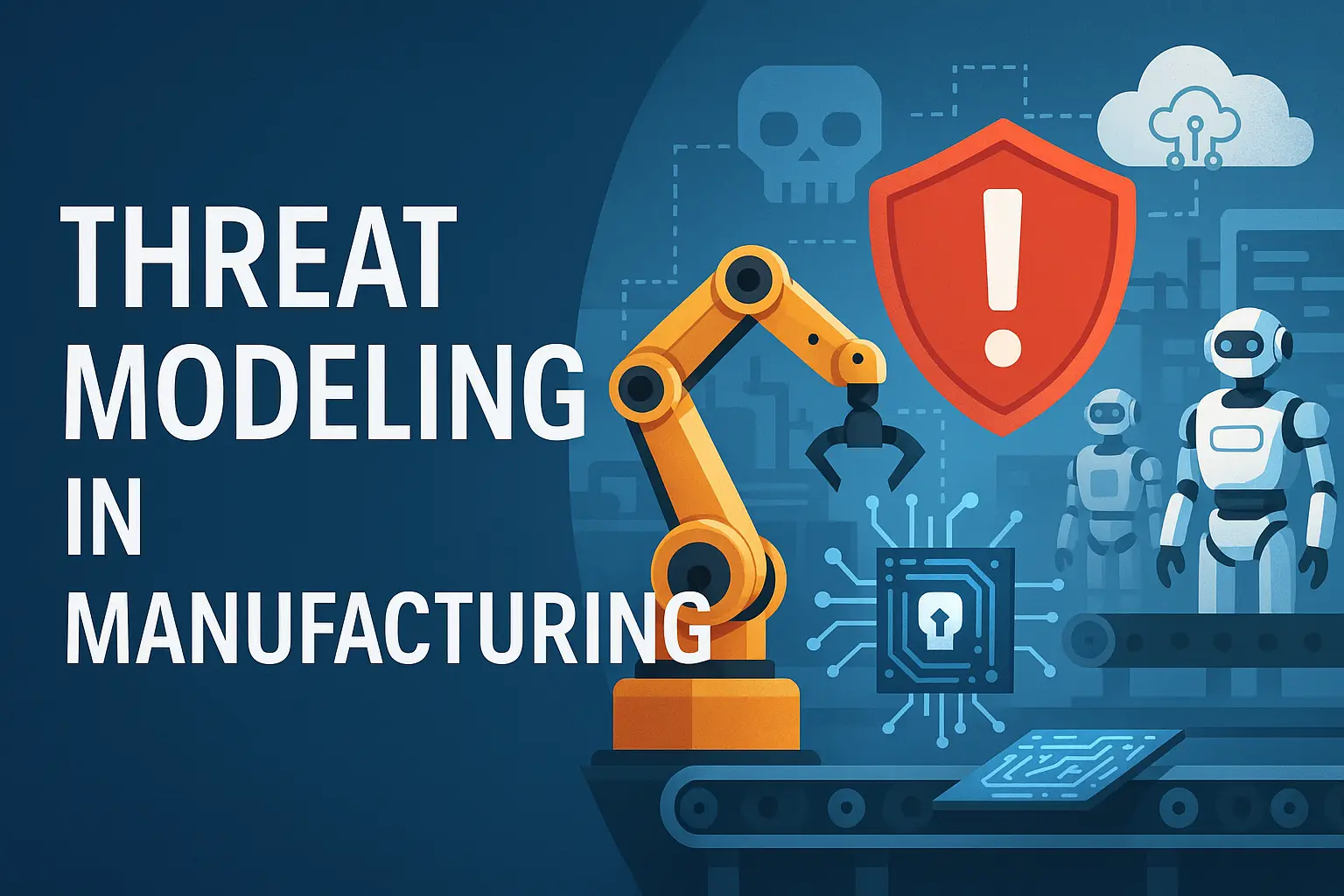Fortifying the Factory: Threat Modeling in the Manufacturing Sector

In the digital industrial environment of today, the traditional lines of manufacture are erasing. Acceptance of Industrial Internet of Things (IIoT), smart robots, and cloud-based manufacturing technologies has helped the manufacturing sector to become a mix of physical machines and digital networks. Although it stimulates efficiency and growth, this development exposes manufacturers to a widening spectrum of cybersecurity vulnerabilities. Threat modeling is not a luxury; rather, it is a necessary for one to stay strong in this surroundings.
Concept of Threat Modeling
Threat modeling is a proactive cybersecurity tool intended to identify, assess, and reduce probable risks before attackers may seize them. Examining a system from the standpoint of an assailant enables one to:
- Identify assets deserving of protection
- Understand how they might be attacked
- Design protections in line with this awareness
By use of threat modeling, one ensures that risks are minimized in manufacturing, where they can lead to:
- Lost income
- Disrupted supply chains
- Compromised safety
…prior to their actual occurrence.
Why Manufacturing Creates an Attractive Target
Manufacturing is becoming more and more important to cybercrime, nation-state players, and insiders. Factors?
- Many companies still use outdated industrial control systems (ICS) not considering cybersecurity.
- From supply chain data, manufacturing processes, and patented designs, high-value intellectual property makes manufacturers rich targets.
- Networked Devices: The IIoT brings about several equipment, devices, and systems connected to the internet, therefore extending the attack surface.
- Attacks like ransomware can interrupt production operations, so resulting in major financial losses and reputation damage.
Producers have to go from reactive security to a predictive, proactive defense—this is where threat modeling comes in—from ransomware attacks like LockerGoga hitting worldwide aluminum producers to Stuxnet-style malware infecting ICS.
Manufacturing Threat Modeling: Essential Ingredients
- Identify Critical Assets
Beginning with the digital and physical assets needing protection:
- Programmable logic controllers (PLCs)
- SCADA systems
- IIoT devices
- Design files and intellectual property
- Production statistics and inventory control systems
Knowing what needs defending helps teams focus their efforts on the most critical areas.
- Plotting the System Architectural Map
Plot then the interactions of these resources. Documentation:
- Network diagrams of manufacturing systems
- Device communication
- Third-party integrations—that is, suppliers, vendors, maintenance providers
- Cloud connections and remote access points
By enabling visualization of data flows, interdependencies, and access points, this mapping helps one to grasp potential attack surfaces.
- Find Attack Points and Threat Agents
Consider both inside and outside threat players. These could be:
- Automated attacks like bots searching for unpatched ICS vulnerabilities
- Compromised vendors with access to internal systems
- Outsider hackers attempting intellectual property theft
- Disgruntled employees fooling about with production systems
In manufacturing, common attack areas are:
- Unsecured remote access
- Default passwords on IIoT devices
- Malware insertion via USB drives
- Ransomware aiming at production systems
- Network traffic interception in segmented environments
- Priority of Risk Setting
Using structured frameworks, assess and rank hazards:
- STRIDE:
o Denial of service
o Spoofing
o Manipulation
o Repudiation
o Information disclosure
o Privilege elevation
- DREAD:
o Affected individuals
o Discoverability
o Explorability
o Damage potential
o Repeatability
In an industrial setting, production continuity often takes front stage. Thus, one could assess a Denial-of-Service (DoS) attack on PLCs higher than a data leak involving non-sensitive information.
- Developing Dealing Strategies
Once risks are ranked, implement appropriate countermeasures. Among these could be:
- Network segmentation isolating operational technology from IT systems
- Remote access multi-factor authentication (MFA)
- Routine patch management for ICS and IIoT devices
- Encryption of production data in transit and at rest
- Employee training to recognize phishing and social engineering attempts
- Backup and disaster recovery strategies to enable operations following an incident
Actual Examples
A ransomware attack on a leading automotive manufacturer in 2021 resulted in days-long production interruption. Investigating revealed proof of attackers gaining network access using a remotely controlled desktop protocol (RDP) with inadequate security. A good threat model would have noted this as a high-risk source and advised access control and surveillance, hence possibly stopping the attack entirely.
Constructing a Culture Sensibly Aware of Threats
Not a one-time check-list, threat modeling is an ongoing process. As manufacturers adopt new technologies such as:
- Digital twins
- Cloud ERP systems
- Artificial intelligence-driven robotics
…threat models must evolve.
Cross-functional teamwork is also rather crucial. Involve:
- Operations managers
- IT and OT security teams
- Engineers and maintenance workers
- Outside vendors and integrators
The entire business becomes strong to meet both known and unknown challenges when all the stakeholders agree on security objectives.
Notes on Conventions at Conclusion
In manufacturing, threat modeling is more than just good practice in a business where physical and financial stakes are both crucial and uptime is absolutely critical. It is vital for business.
Apart from preventing costly attacks by meticulously identifying holes and developing defenses, manufacturers might safeguard their:
- Innovation
- Workforce
- Competitive edge
In an era when cyber-physical systems are always under attack, it’s not only about building better machines—it’s also about building smarter defenses.
